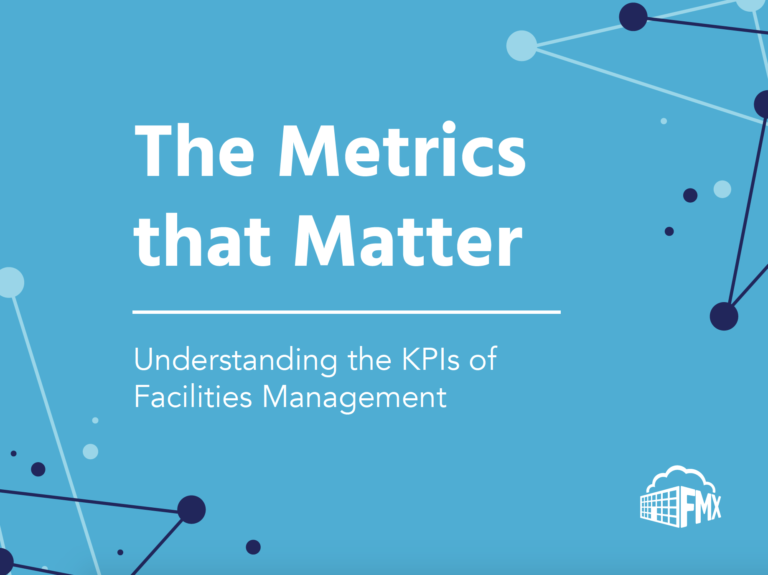We’ve all heard the phrase, “what gets measured is what gets done.” So, what really matters to most educational organizations when it comes to facilities management? This list of 28 key performance indicators (KPIs) represent the metrics that matter to thousands of organizations around the world. Be sure to check your score at the end of the this exercise on page 5 to see how your measurements compare to other schools.
Key performance indicators
- Custodial Work – Cost per Square Foot: Total cost of district-operated custodial work plus total cost of contract-operated custodial work, divided by total square footage of all non-vacant buildings
- Custodial Work – Cost per Student: Total custodial work costs (contractor and district operated), divided by total student enrollment
- Custodial Workload*: Total square footage of non-vacant buildings that are managed by the district, divided by total number of district custodial feld staff. This measure only applies to district- operated sites
- Custodial Supply – Cost per Square Foot: Total custodial supply cost of district-operated custodial services, divided by total square footage of buildings managed by the district. This measure only applies to district-operated sites
- Routine Maintenance – Cost per Square Foot*: Cost of district-operated maintenance work plus cost of contractor-operated maintenance work, divided by total square footage of non-vacant buildings
- Routine Maintenance – Cost per Work Order: Total costs of all routine maintenance work, divided by total number of routine maintenance work orders
- Routine Maintenance – Proportion Contractor – Operated, by Work Orders: Number of routine maintenance work orders handled by contractors, divided by total number of routine maintenance work orders
- Major Maintenance – Cost per Student: Total cost of major maintenance work divided by total student enrollment
- Major Maintenance – Delivered Construction: Costs as Percent of Total Construction costs of major maintenance/minor renovation projects, divided by total costs of all major maintenance/minor renovation projects
- Major Maintenance – Design to Construction Cost Ratio: Design costs of all major maintenance/minor renovation projects, divided by construction costs of all major maintenance/minor renovation projects
- Renovations – Cost per Student: Total cost of renovations divided by total student enrollment
- Renovations – Delivered Construction Costs as Percent of Total Costs: Construction costs of major rehab/renovation projects, divided by total costs of all major rehab/renovation projects
- Renovations – Design to Construction Cost Ratio: Design costs of all major rehab/renovation projects, divided by construction costs of all major rehab/renovation projects
- New Construction – Cost per Student Total costs of new construction projects, divided by total student enrollment
- New Construction – Delivered Construction Costs as Percent of Total: Delivered construction costs of new construction projects, divided by total costs of all new construction projects
- New Construction – Design to Construction Cost Ratio: Design costs of all new construction projects, divided by construction costs of all new construction projects
- Maintenance & Operations (M&O) – Cost per Student: Total custodial costs (district & contractor) plus total grounds work costs (district & contractor) plus total routine maintenance costs (district & contractor) plus total major maintenance/minor renovations costs plus total major rehab/renovations divided by enrollment
- Maintenance & Operations (M&O) Costs – Ratio to District Operating Budget*: Total custodial costs (district and contractor) plus total grounds work costs (district and contractor) plus total routine maintenance costs (district and contractor) plus total major maintenance/minor renovations costs plus total major rehab/renovations
- Work Order Completion Time (Days): Total aggregate number of days to complete all work orders, divided by total number of work orders
- Recycling – Percent of Total Material Stream*: Total material stream that was recycled (in tons), divided by total material stream (in tons)
- Utility Costs – Cost per Square Foot*: Total utility costs (including electricity, heating fuel, water, sewer), divided by total square footage of all non-vacant buildings
- Utility Usage – Electricity Usage per Square Foot (KWh)*: Total electricity usage (in kWh), divided by total square footage of all non- vacant buildings
- Utility Usage – Heating Fuel Usage per Square Foot (KBTU)*: Total heating fuel usage (in kBTU), divided by total square footage of all non-vacant buildings
- Utility Usage – Water (Non-Irrigation) Usage per Square Foot (Gal.): Total water usage (in gallons) excluding irrigation, divided by total square footage of all non-vacant buildings
- Green Buildings – Buildings Green Certifed or Equivalent: Square footage of all permanent buildings (academic and non- academic) with a green building certifcate, plus square footage of all permanent buildings (academic and nonacademic) that were built in alignment with a green building code but not certified
- Event Scheduling*: Total number of events booked, multipled by total hours rented
- Event Scheduling & Capturing Costs: Total number of events booked, multipled by total hours rented, then multiplied by the cost per hour of each facility/room rented
- Event Support: Total time to setup, tear-down, clean, and/or clear the portion of the facility being used
Where do you fall?
0-10: By thinking about which KPIs your organization needs to be measuring, benchmarking, and communicating to your team, you are moving in the right direction. However, the more KPIs you can measure, the more benefits you can gain – thousands of schools agree. If you slowly start checking off more of these boxes, you will quickly have insight into maintenance activities such as work order completion time, utility usage, construction costs (and relative percentages), event costs, and more.
11-21: You’re right in the sweet spot, and probably have quite a lot of visibility into your maintenance activities. However, schools that are focused on keeping costs low, maintenance processes efficient, and equipment downtime nearly nonexistent, measure even more KPIs. By tracking only a few more of these measurements, you could increase productivity by up to 50% and save thousands monthly in downtime expenses.
22-28: If you’re measuring this many KPIs, then bravo! You’re tracking all the right things, which gives you insight into costs, efficiency, workload, and more. The next question you should ask yourself is if you have a plan or process in place to improve these KPIs. Measuring and benchmarking these indicators is excellent, but you can only make a difference for your team if you have a way of acting on, and improving, them.
About FMX
FMX is purpose-built for educational organizations whose facilities play a vital role in supporting their students, faculty and community around them. Organizations all over the world use FMX to manage and improve their Key Performance Indicators (KPIs) each and every day so that they can spend more time providing the best learning environment possible for their students.

